What to plant in April: 10 ideas for color and interest in your garden
Our top ideas for what to plant in April will give your garden a boost for the warmer weather ahead
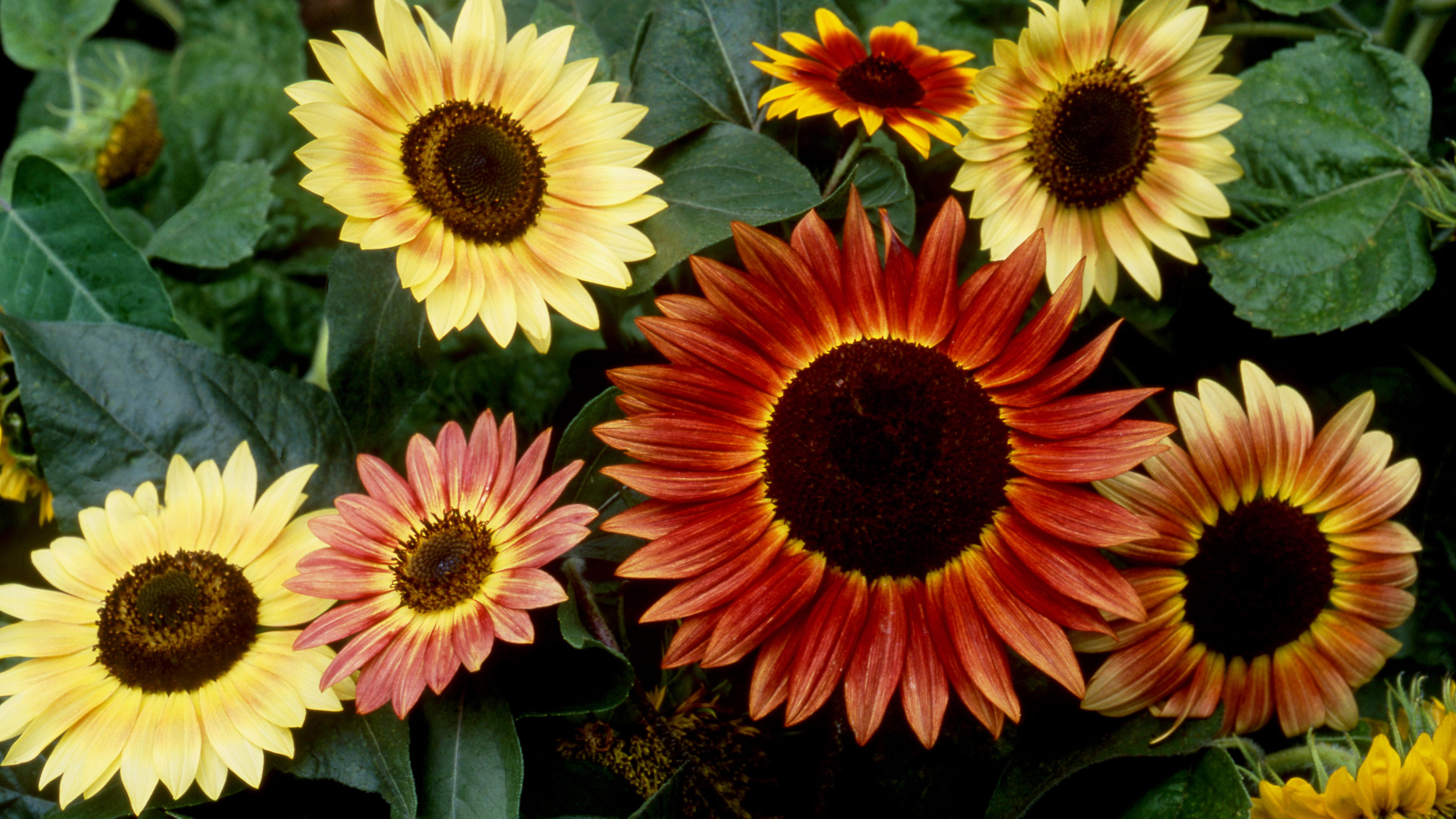

Working out what to plant in April can be something of a lottery, as it is with good reason that it is often known as ‘the cruellest month’ for gardens.
It is usually seen as the gateway to the warmer days of summer, but it can sometimes catch many of us out with cold weather and overnight frosts knocking back tender plants and making the ground unworkable.
Hopefully, this April will be kind to gardeners everywhere and deciding what to plant when will be less problematic. However, don't be too keen to put less hardy plants outside, as in many areas we are not clear of the frost zone just yet!
Our top 10 ideas for what to plant in April
Now the weather is on the up and temperatures are (or should be) rising, the soil is more hospitable for new plants, giving you lots of options for what to plant in April.
Hardy annual seeds can be sown directly into flower beds and borders, while half-hardy annuals should still be sown undercover until the end of April or early May.
Most perennials can go outside now, so it's a brilliant time to start thinking about your garden border planting ideas to create the best looks for the coming months.
Do remember that if you have an exposed garden or live a cooler part of the UK or US, you may need to delay planting out until the weather is reliably improved and warmer.
1. Ranunculus
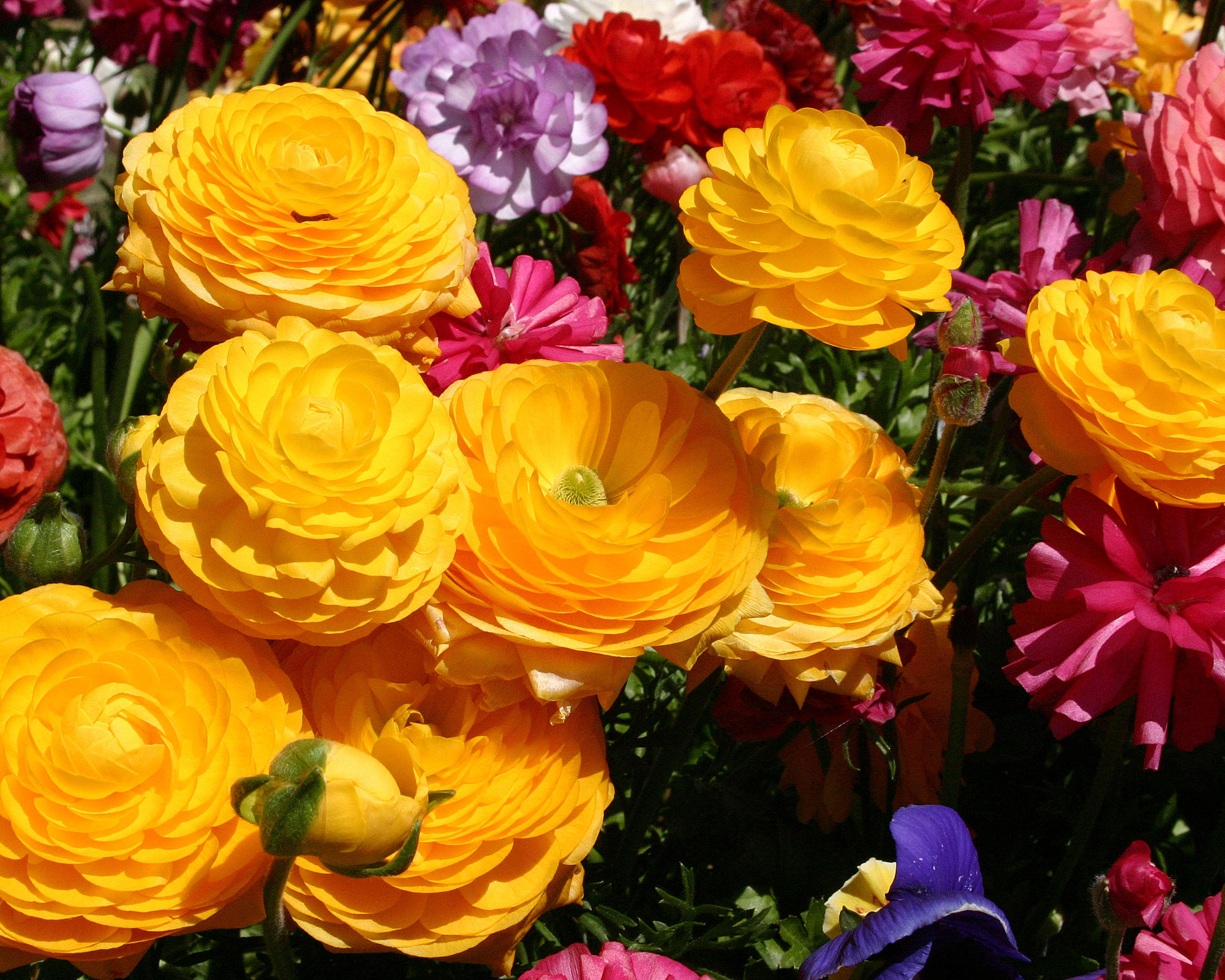
The tightly furled petals of ranunculus or water crowsfoot
If you are looking for bright pops of gemstone colors in your summer garden, look no further than glorious ranunculus.
Also known as Persian buttercups and water crowsfoot, they produce multi-layered cupped flowers in a wide range of vibrant shades.
These attractive plants will not only bring glamor to the garden, their sturdy stems make them ideal as cutting garden flowers for indoor arrangements too.
Ranunculus grow from claw-shaped bulbs that do best if soaked for a couple of hours before planting. Plant them with the ‘claws’ pointing down in a sunny site with fertile soil that drains well.
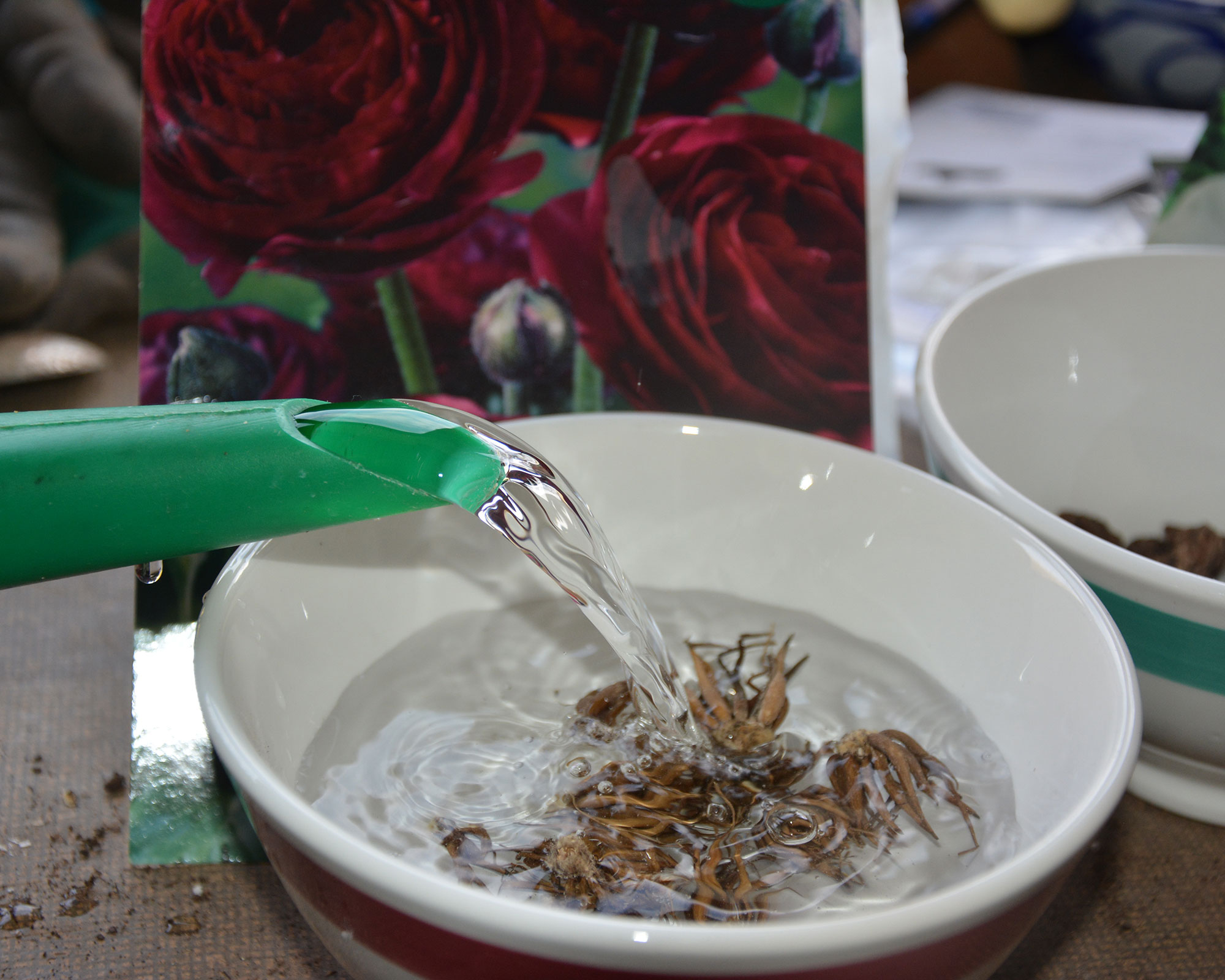
Soaking ranunculus claws before planting
If your soil is heavy and prone to sitting wet in fall and winter, grow your ranunculus in garden planters, don’t let the compost get too wet, then lift and store the claws through winter when the leaves have died back.
For good flowering year after year, feed the plants with liquid tomato fertilizer through the growing season and also as they die back.
Top tip: When picking for the vase, select stems where the buds are still closed but have developed the color of the petals underneath and are slightly ‘squishy’ when gently squeezed. These will last the longest.
2. Nicotiana or tobacco plant
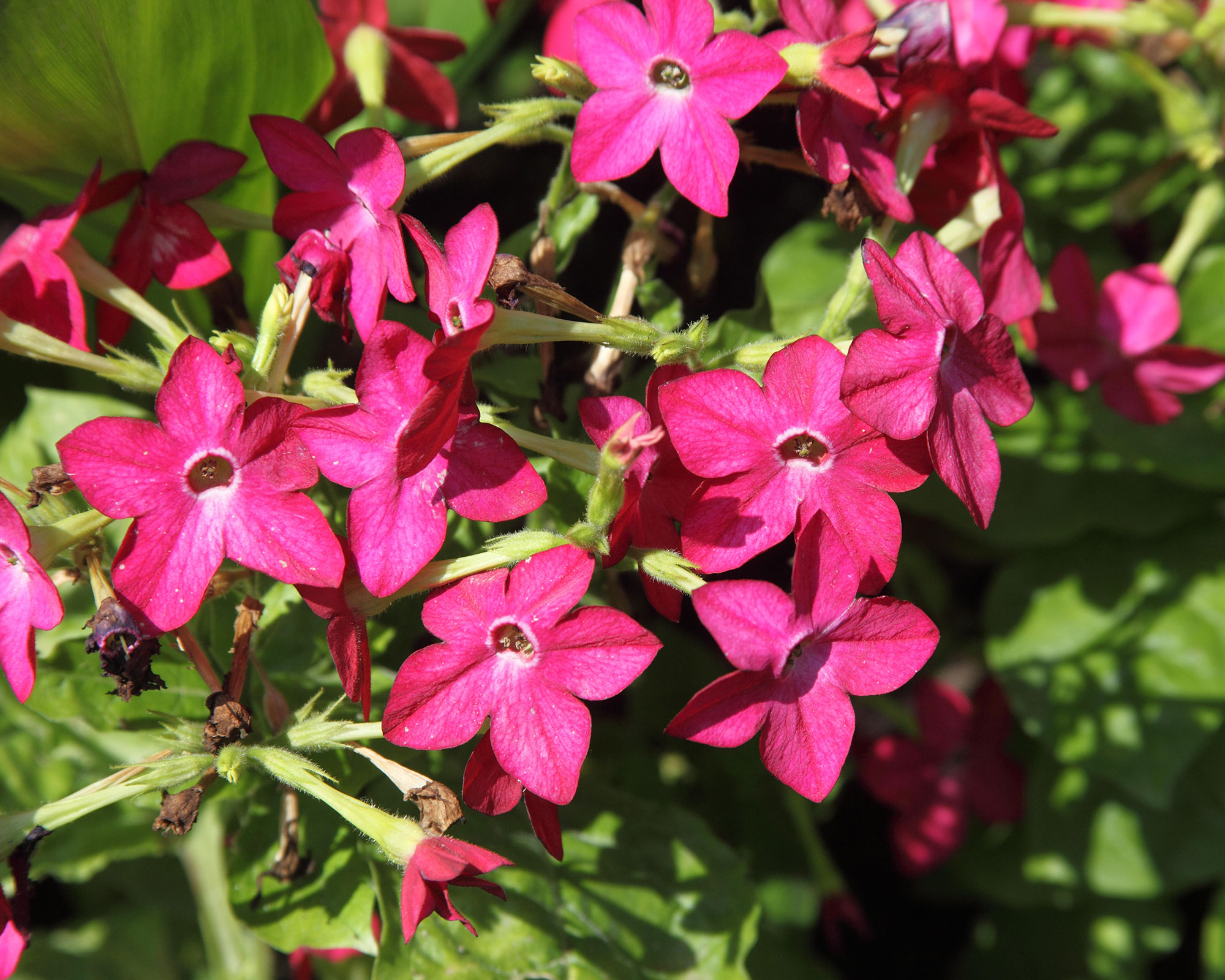
The vibrant pink flowers of Nicotiana x sanderae 'Starship Series'
It is time to start thinking about summer bedding plants and how to get the best results as easily as possible. If you are looking for something that combines daytime beauty with evening scent, look no further than easy-going, easy-growing nicotianas, or tobacco plants.
You can sow them this month and grow them undercover ready for planting out once the frosts have reliably finished, or buy plug plants from your local garden centre to nurture in a frost-free greenhouse or porch until the weather has warmed up at night.
When adding them to the garden, plant them in a sunny spot or in very light shade, as if it is too dense, taller varieties will start to bend towards the sun.
There are many varieties of nicotianas and they come in many colors, from a plummy shades to lime green that works as a fantastic foil to many of the red and sunny colors of summer flowers.
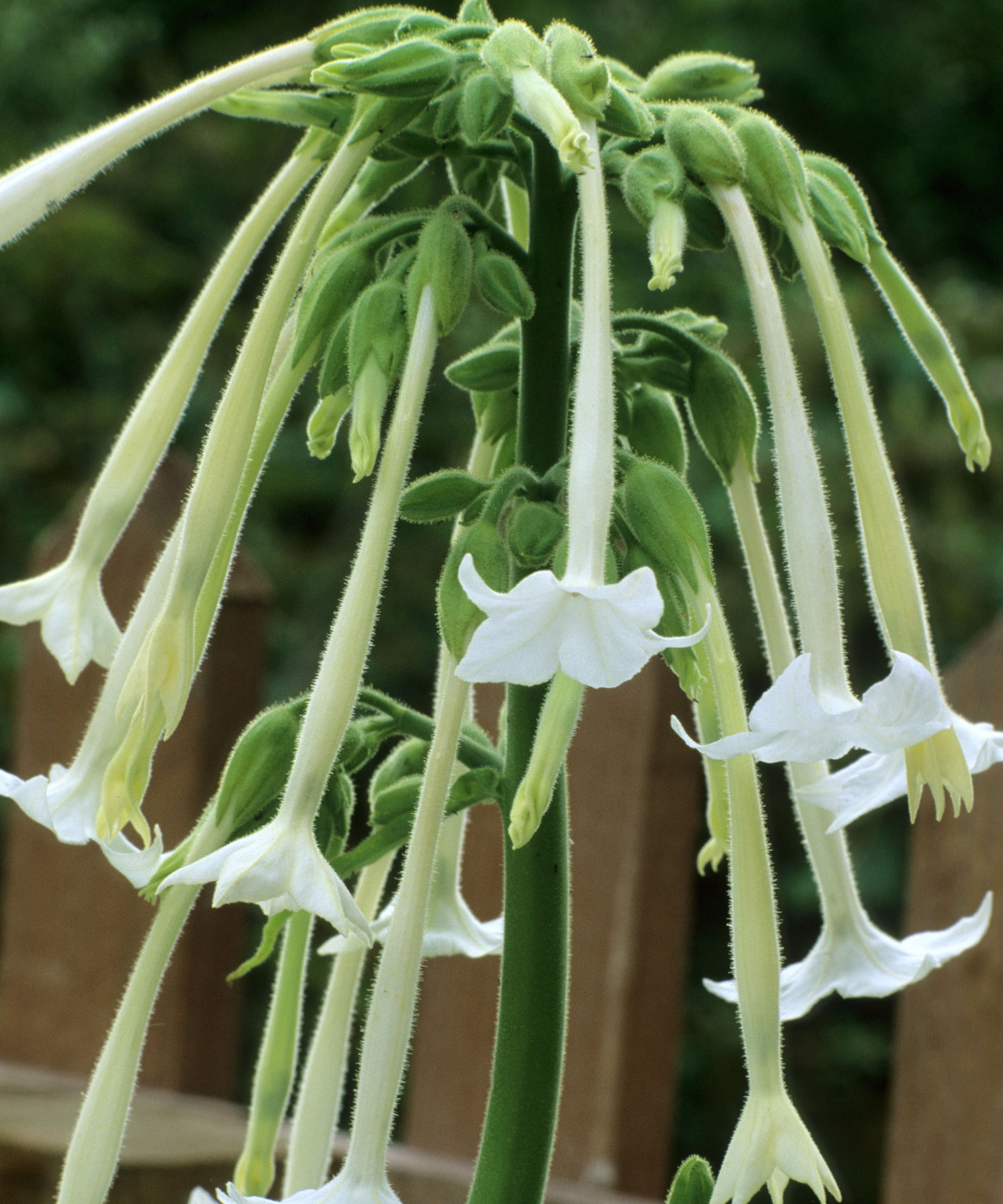
Tall Nicotiana sylvestris has scented leaves and long white trumpet-shaped flowers
One of my favourites is statuesque Nicotiana sylvestris, which grows up to 60in (1.5m) tall and looks elegant in the middle of beds and garden borders.
This variety has large scented leaves and long white trumpet-shaped flowers and like all nicotianas, flowers from summer until well into the fall.
Top tip: Although used as summer bedding, nicotianas can be treated as perennials and will survive winter outdoors in a sheltered spot if they are cut back in fall and get a winter mulching. Alternatively, collect the seeds when the seedheads ripen.
3. Monarda or 'bee balm'
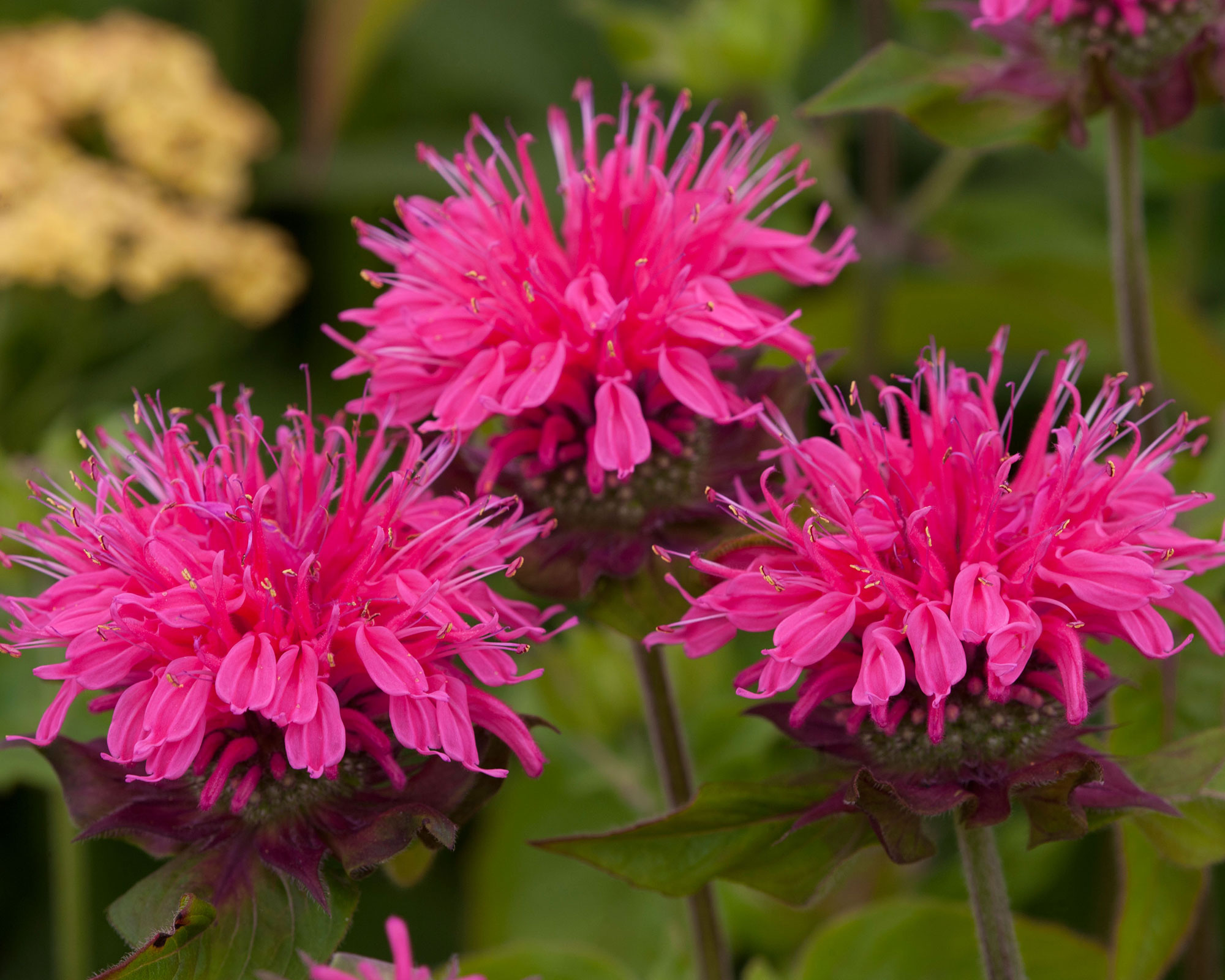
Monarda varieties including 'Pink Lace', pictured here, will help attract pollinators to the garden
Monarda, also known as bee balm and bergamot, is one of the best plants for pollinators and is guaranteed to introduce lots of color to your plot.
It is a sun-loving perennial and thrives in soil that retains moisture well, meaning that a single plant can become a clump that will need dividing a few years down the line. In the right spot, monarda will flower from early summer right through to the fall.
Monarda florets are made up of lots of small tubular flowers radiating out from a central point, creating an attractive shaggy look. They come in shades of red, purple and mauve and are one of the most low-maintenance plants in the summer garden.
Top tip: In early summer, give established plants a ‘Chelsea chop’ before they flower – cutting them back by a third or half – to create a neat shape and profuse flowering later in summer.
4. Sunflowers
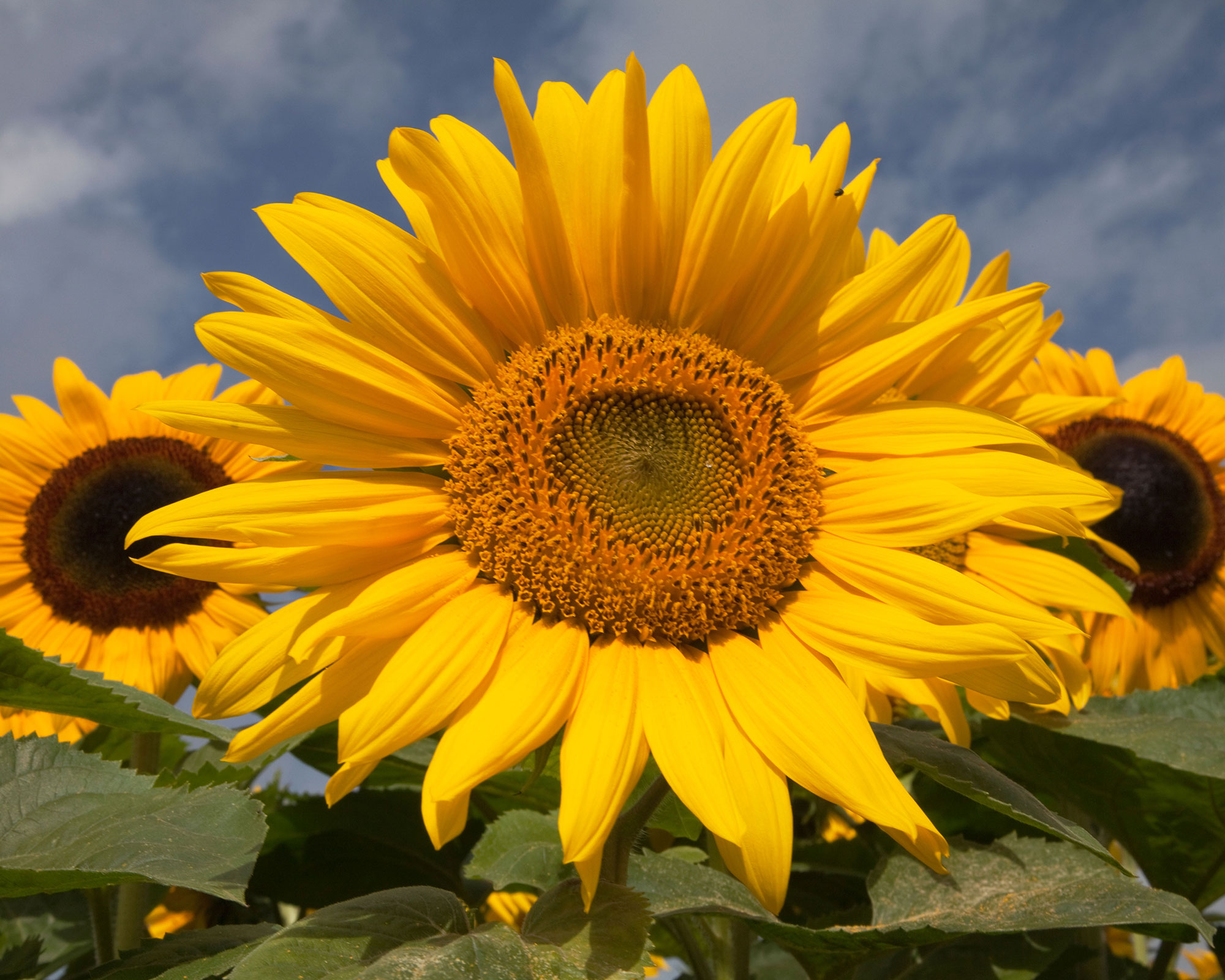
You can't fail to be cheered by the sight of a tall row of cheerful sunflowers in a summer garden
The next option on our list of what to plant in April is beloved by children everywhere. Sunflowers are one of the cheeriest summer flowers imaginable, and it's also the national flower of Ukraine.
If you don't have the space nor inclination for one of the wide range of super-tall varieties, often grown for their height and dinner plate-sized flowers, a myriad other, smaller, multi-flowered varieties are readily available too.
And you don’t have to plump for the usual golden petals either, as there are several varieties with bronze, orange and even red flowers.
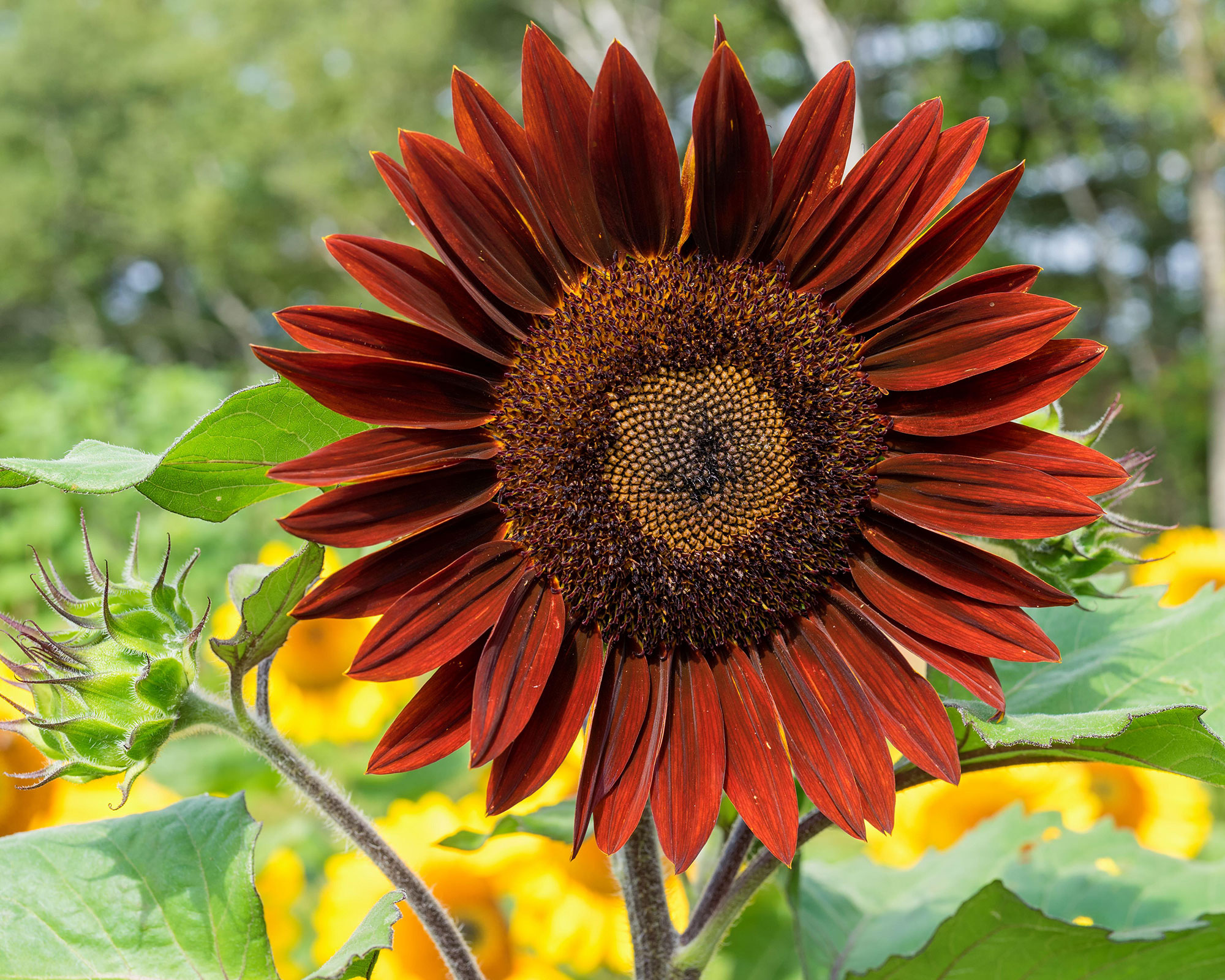
Bronze sunflowers really stand out in a summer garden
At the start of April, sow your sunflower seeds in small pots of multi-purpose compost and germinate them undercover before planting them out when they are large enough to survive the garden. By the end of month, you should be able to sow directly into the soil in a sunny spot.
Stake the seedlings as they grow and protect them from slugs and snails – our guide on how to get rid of slugs has lots of useful tips to help you.
Top tip: When the flowers die in fall, leave the heads in place so that garden birds, especially finches, can make the most of the bountiful seeds.
5. Geums
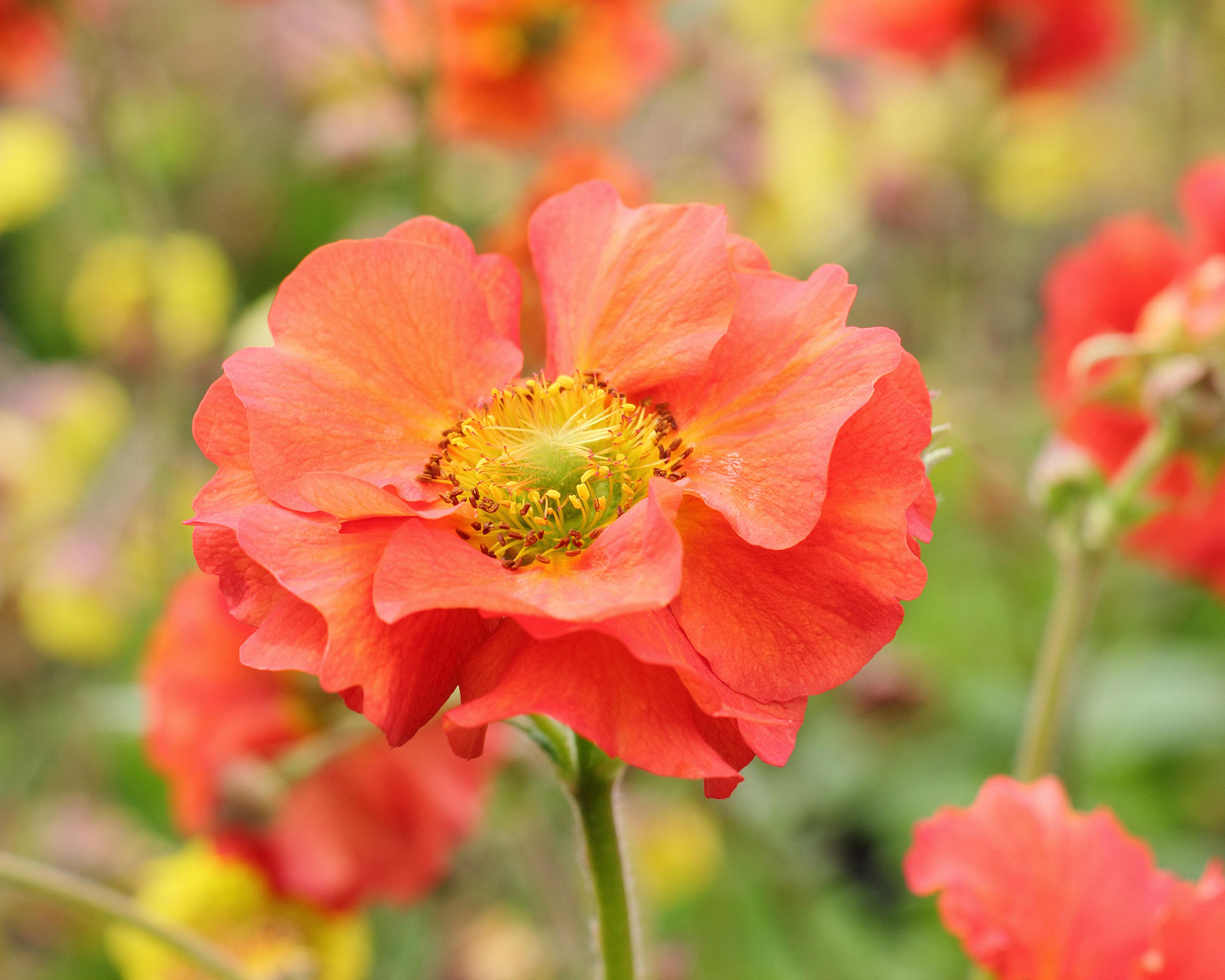
The vibrant petals and golden heart of the summer perennial Geum 'Scarlet Tempest'
For long-lasting color and charm that returns year after year, you can’t go wrong with Geums. These lovely perennials usually flower in shades of orange, yellow and red as well as the sweetest apricot. They are semi-evergreen and grow to around 20in (50cm), making them ideal for the front and middle of borders.
Geums like sun or partial shade and do best in soil types that are fertile, not waterlogged but fairly moisture retentive. If you garden on heavy or clay soils it is worth digging in lots of manure and grit before planting to open it up.
These plants don’t like very dense soils so if your garden is prone to waterlogging, consider growing them in pots as part of your patio gardening ideas, but do watch out for vine weevil larvae that will eat their roots.
Top tip: Geums spread via rhizomes, thick underground roots, and can be dug up and divided every three years or so.
6. Freesias
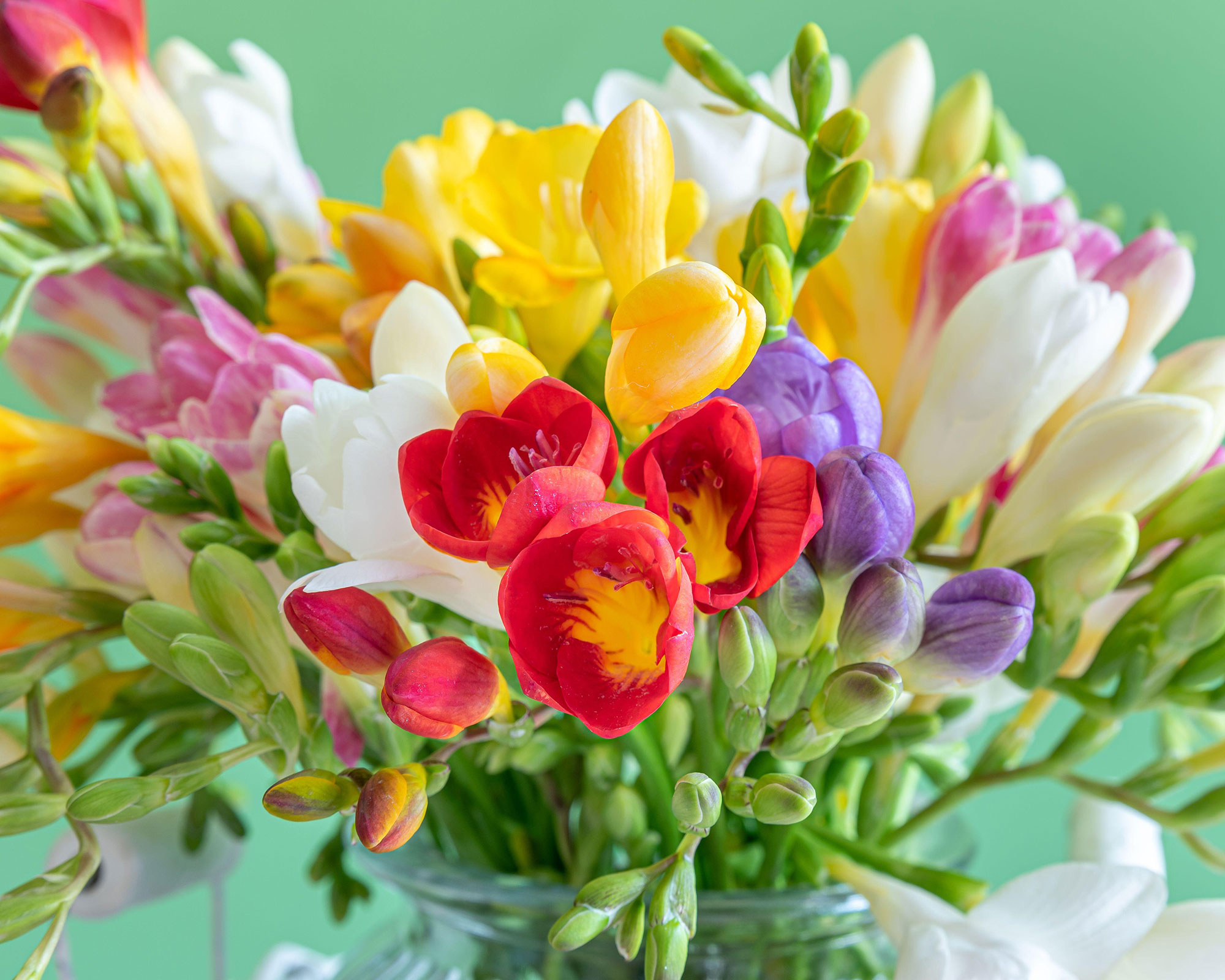
Freesias like a sunny spot and produce the sweetest scent
Freesias are a delightful option for what to plant in April, producing myriad glossy flowers in bright colors. But their main calling card is their delicious spicy-sweet scent, which is why I like to include them in my container gardening ideas, so they can be moved to the garden’s seating area.
Freesias don’t like the cold, so you should consider planting them in two batches: an early one in pots undercover with a later planting outdoors in a sunny, well-drained border when the weather is reliably warmer.
Like all bulb plants, freesias do best in free-draining, fertile soil in a sunny spot. Their stems will need supporting as they grow and the plants will benefit from a fortnightly feed with liquid tomato fertilizer to keep them flowering well.
Lift bulbs in fall and store them somewhere cool, dry and frost-free in winter.
Top tip: Save some bulbs to plant in pots in autumn for indoor color and fragrance through the winter months.
7. Asters
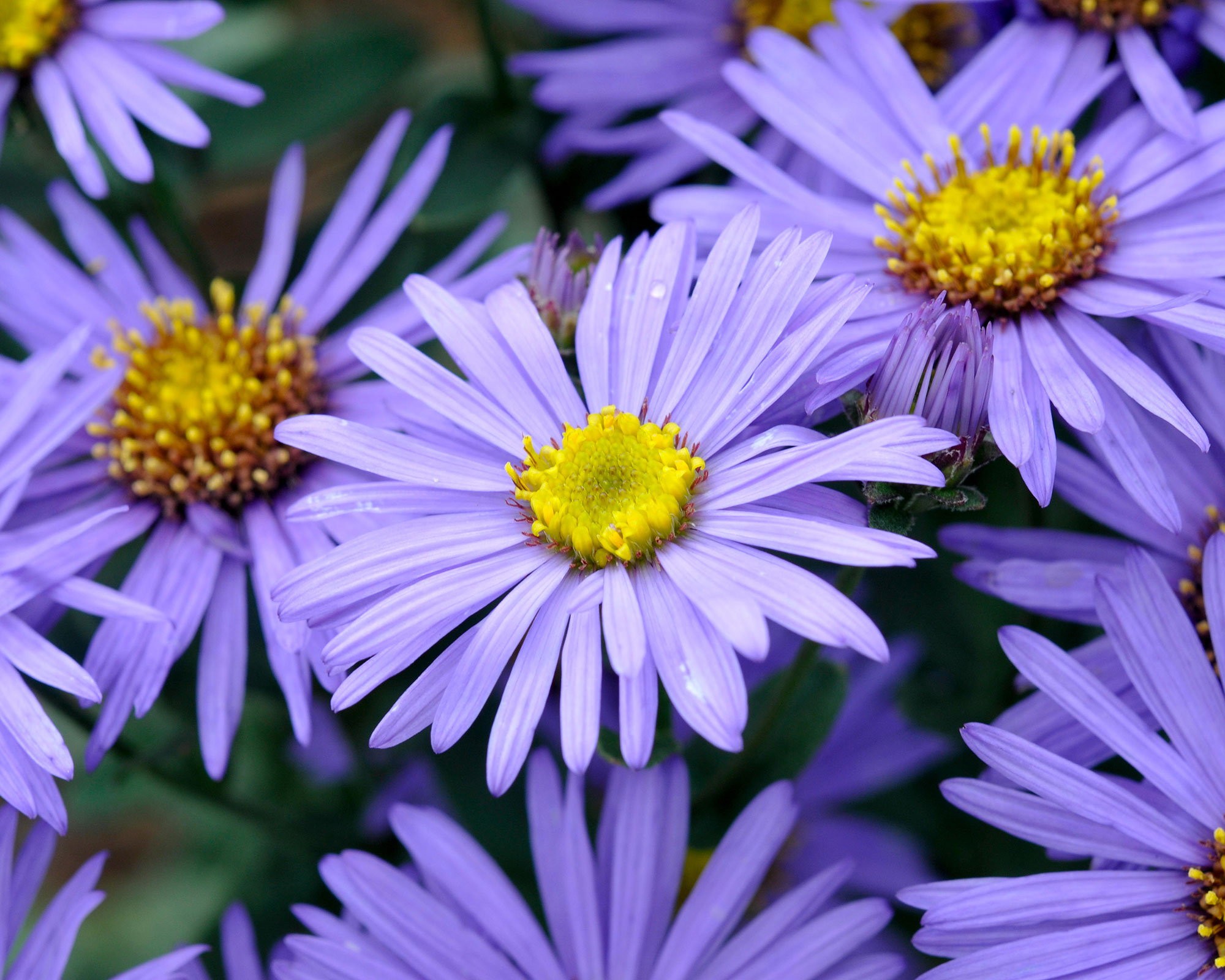
Asters, or Michaelmas daisies, such as this Aster amellus 'Kobold' never seem to go out of fashion and come in a range of shades
Asters, or Michaelmas daisies, are one of those traditional plants that never seem to go out of fashion – and it’s easy to see why.
Add these to your list of what to plant in April and you'll be rewarded with a robust perennial that flowers through summer until well into the fall. They come in a range of gorgeous colors, from deepest purples and cerises to the more common mauve and even pristine white.
Their profusion of daisy-like flowers are loved by many pollinators including late-season butterflies, and they also make excellent cut flowers.
There are many types of aster, though they fall into two groups: North American and European, with the US varieties commonly known as Symphyotrichum or Eurybia.
Grow your asters in dappled or partial shade in soil that is free-draining but moisture retentive. Give them plenty of space to flourish, deadhead flowers regularly and you will be rewarded with months of fabulous color.
Top tip: Asters, particularly American varieties, can be prone to mildew so grow them somewhere with good ventilation and don’t let their soil dry out. More resistant varieties include European Aster amellus, Aster pyrenaeus and Aster x frikartii, as well as Eurybia x herveyi, and Symphyotrichum ‘Little Carlow’.
8. Zantedeschia or calla lily
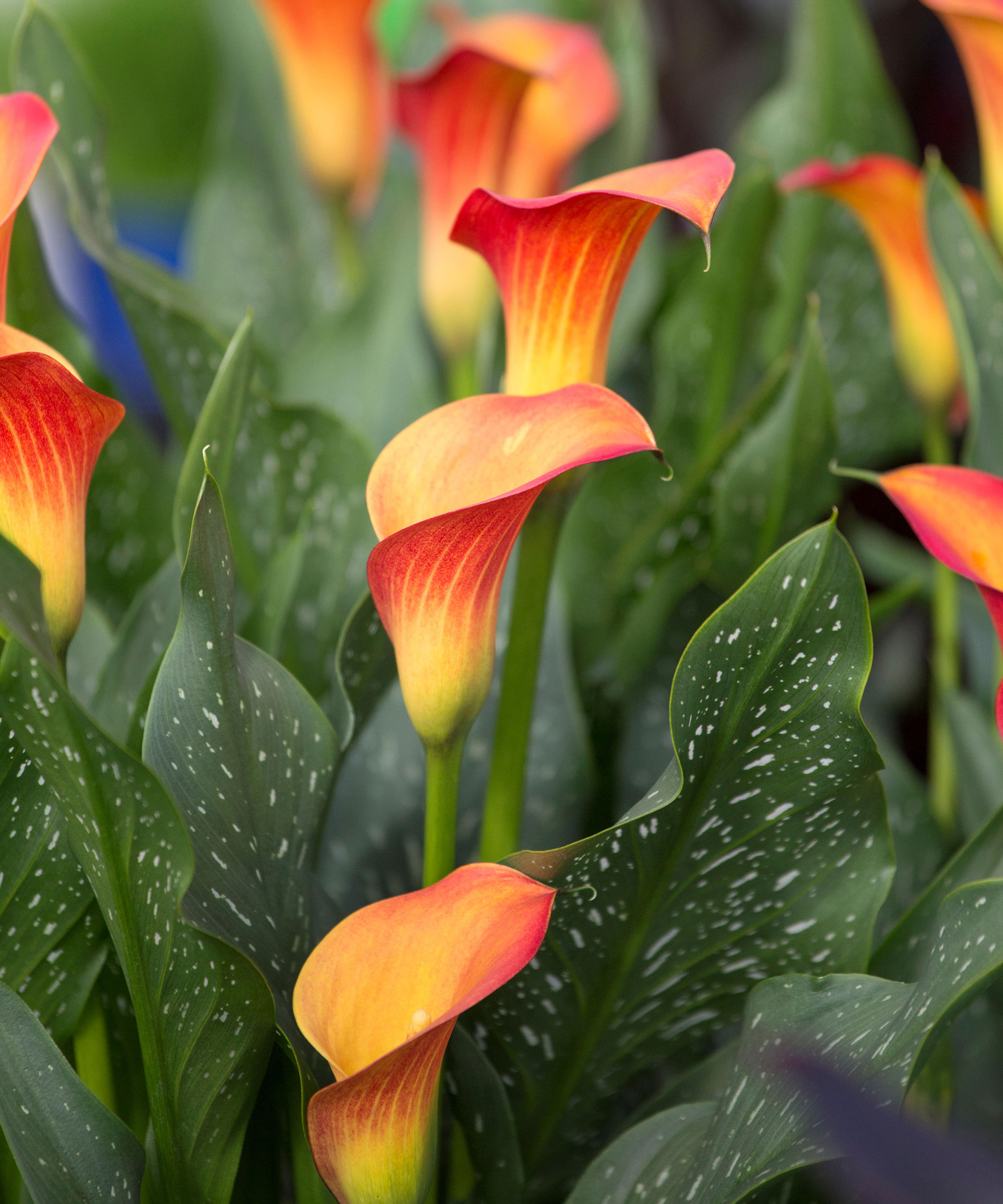
The orange flowers and speckled leaves of calla or arum lily, also known as Zantedeschia
When it comes to cool beauty, look no further than Zantedeschia aethiopica, also known as arum or calla lilies.
They are usually bought as rhizomes (thick roots) and ideally grown in pots and brought undercover for the colder winter months. Their glossy trumpet-shaped flowers are often white but you can also buy them in shades of apricot and pink.
Zantedeschia are not ‘true’ lilies and although they are originally from South Africa they will grow happily in cooler climates throughout the summer, their large exotic flowers offset by lush foliage that is often attractively speckled with silver or white.
Calla lilies are also popular options for indoor plants and will thrive in a cool conservatory, though it is worth hardening them off and taking them outside in summer where they will benefit from increased light levels and rainfall.
Water and feed when in flower, continuing to do so after flowering to fed the leaves and rhizome.
Top tip: Although most callas are not frost hardy and need storing undercover in a frost-free place in winter, the white Zantedeschia aethiopica is hardy in mild areas with a good mulch around the roots.
9. Amaranthus
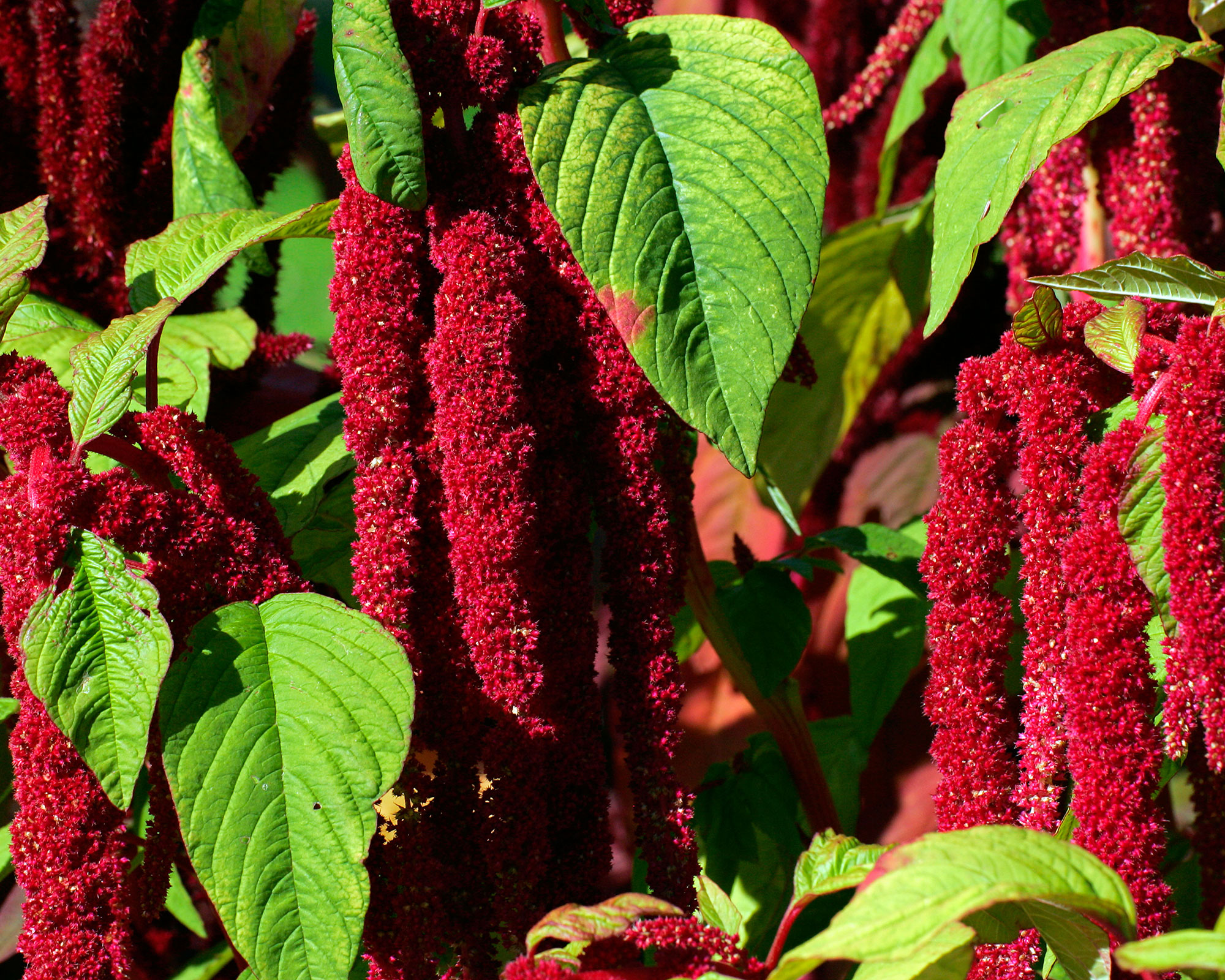
The attractive red flowers of Amaranthus or tassel flower are edible as well as decorative
I love a plant that is happy to pay its way and Amaranthus caudatus does that in spades, so it's one of my favorite options for what to plant in April.
Also known as ‘tassel flower’ and ‘love lies bleeding’, Amaranthus (or Amaranth) is easy to sow and grow and brings a mass of large flower spikes coloured in shades of red and green to the garden, all offset by attractively red or maroon foliage.
If you're interested in growing flowers from seeds, Amaranthus is a good option as it's easy to grow from seed undercover and does best in a sunny spot. It looks beautiful planted with other bright and beautiful summer plants such as dahlias and zinnias. You can also grow it in containers and your veg patch.
Different varieties grow to different heights (check the seed packet when sowing) so can be set either at the front or middle of your borders accordingly. They like to be kept watered, but not soggy.
The flowers are also a dramatic addition to indoor arrangements and can be dried for long-term decorations.
Best of all, you can grow it as an edible flower as the seeds and leaves are both edible. You’ll find it in shops labelled as a variety of things including amaranth, calloo, Chinese or Caribbean spinach and Inca wheat.
Top tip: Harvest the edible leaves when they are young and tender and use them in salads and curries. The nutty seeds can be used in the same way as grains such as quinoa and are collected when ripe in late summer or autumn. Shake them into a bag or container when still on the plant.
10. Gazanias or 'treasure flowers'
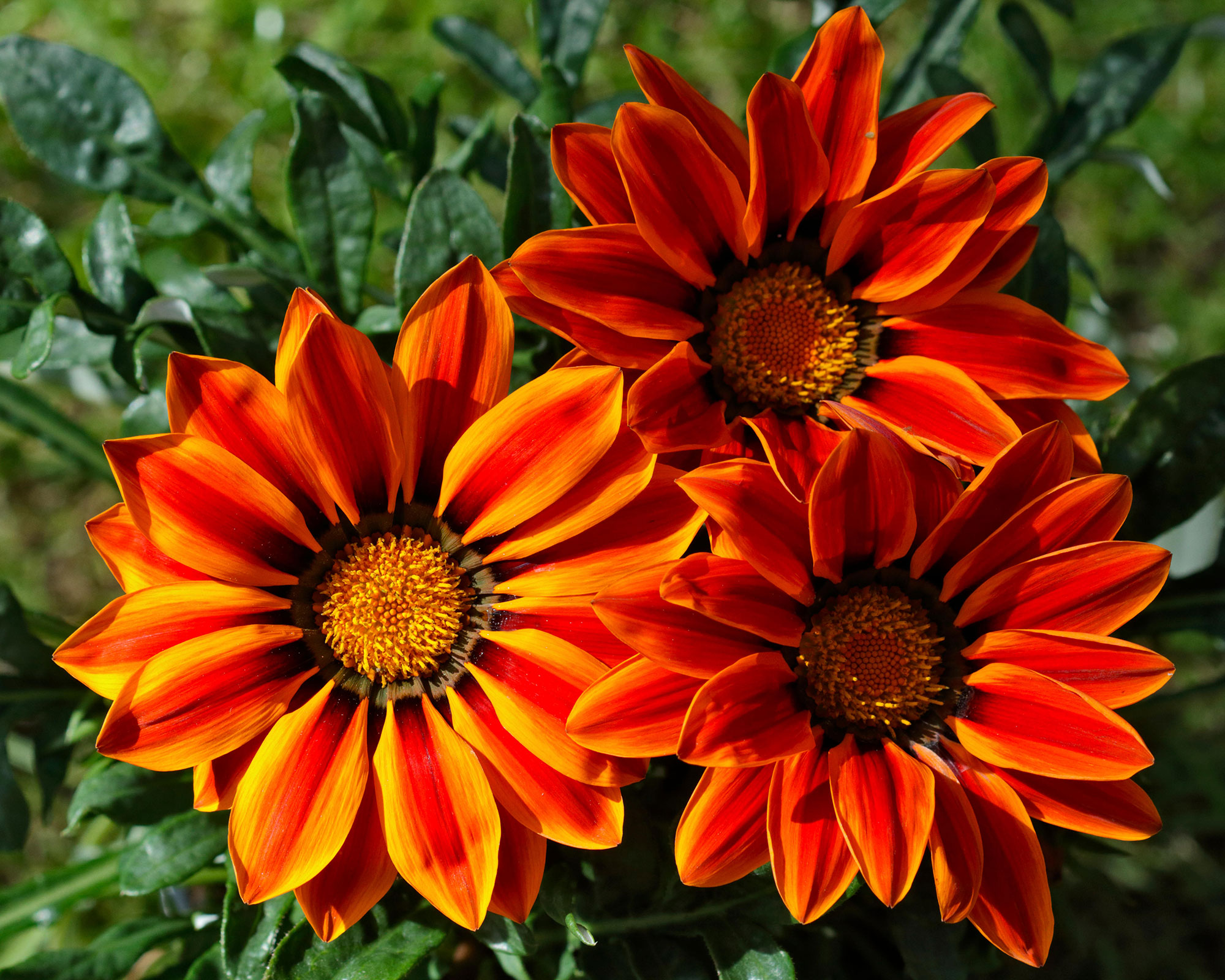
Vibrant red and orange flowers of Gazania 'Kiss Orange Flame'
Gazanias are also known as ‘treasure flowers’ for good reason – their flowers, resembling robust daisies, are some of the brightest and most eye-catching in the summer garden, giving any garden color scheme an instant boost.
Often seen in vibrant tones of orange, red, yellow and bronze, there are also varieties with maroon or white flowers, and they all close when the sun passes or disappears, and reopen when it shines upon them again.
They originate from South America and are often grown as annuals in the UK, though they will survive winters in a sheltered spot in warm areas. Otherwise, compost them or pot them up and overwinter them somewhere frost-free.
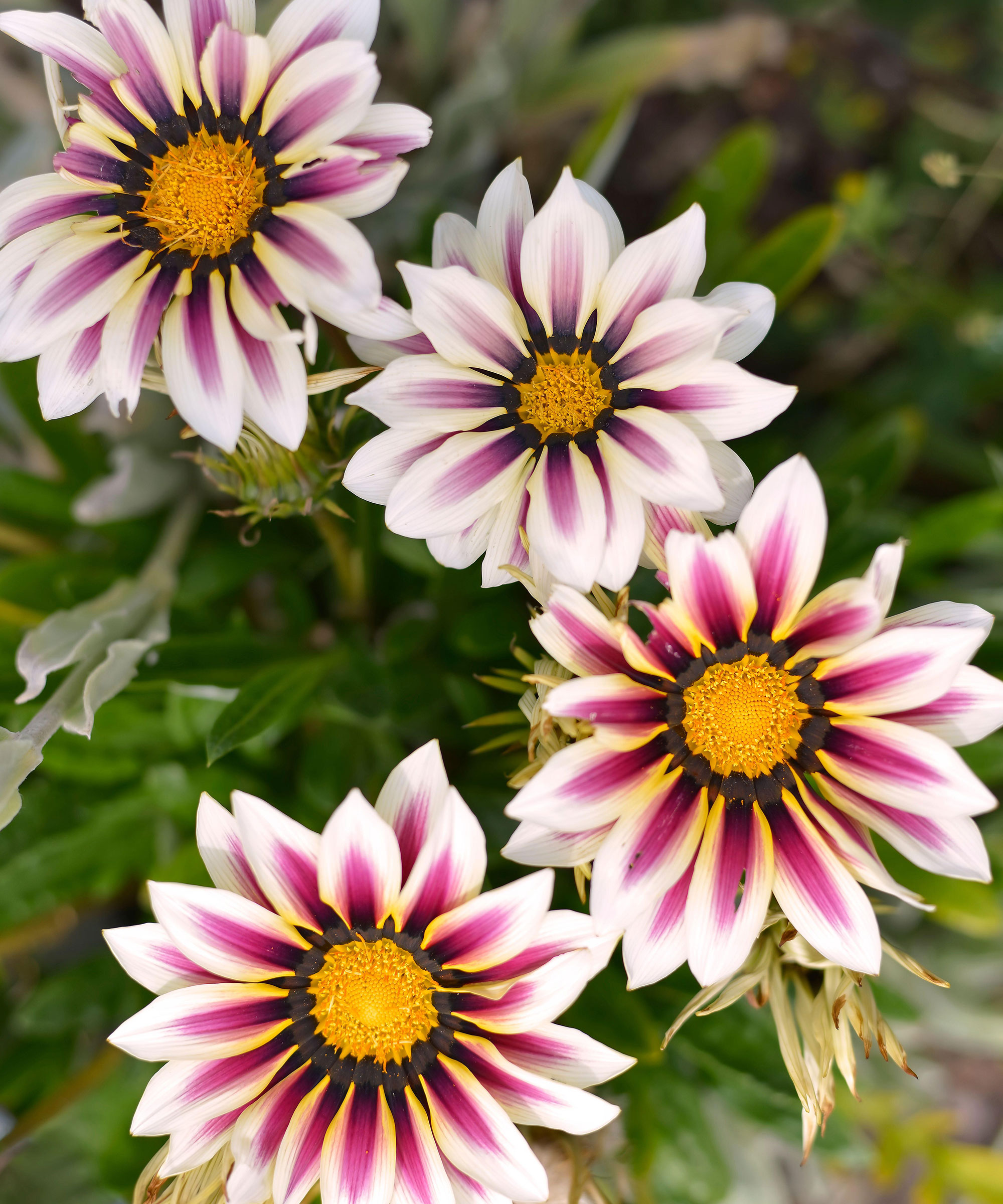
Gazanias also flower in cooler shades of white, often with contrasting colours
Start gazanias from seed undercover in April and grow on the seedlings before hardening them off and planting them out when night temperatures are reliably stable and warm. You can also buy plants that are ready to flower from garden centers and online suppliers.
Top tip: Deadhead regularly for prolonged flowering and feed fortnightly with a liquid tomato fertilizer for the best blooms.
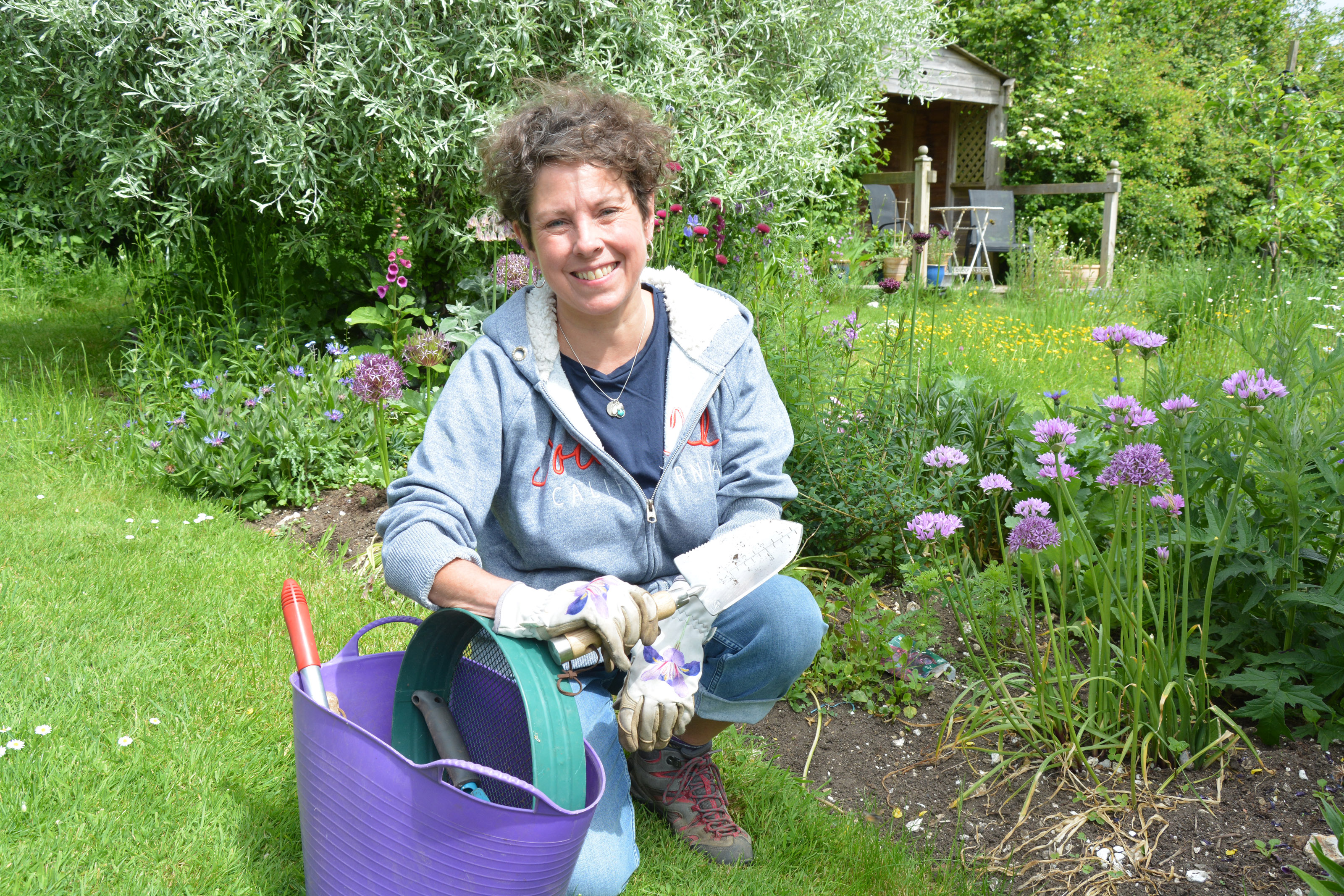
Ruth is the gardening editor of Amateur Gardening magazine and spends her working days carrying out, writing about and photographing the tasks the readers should be carrying out each week, as well as testing many of the new products that arrive on the gardening market. She is horticulturally trained, with a qualification from the Royal Horticultural Society.
